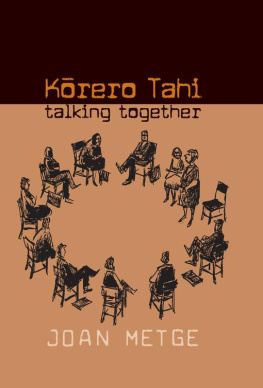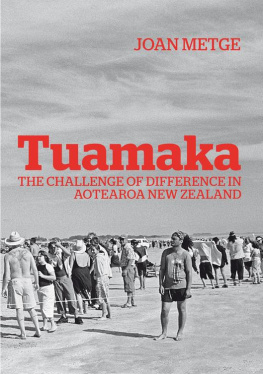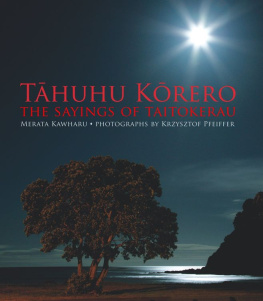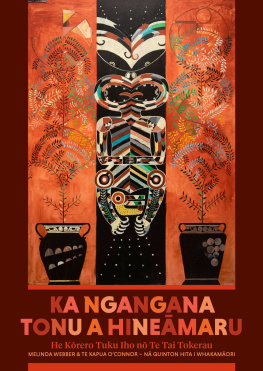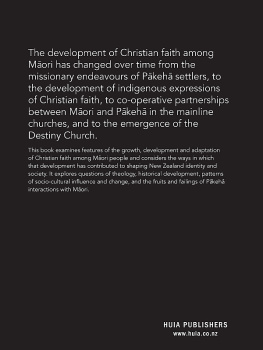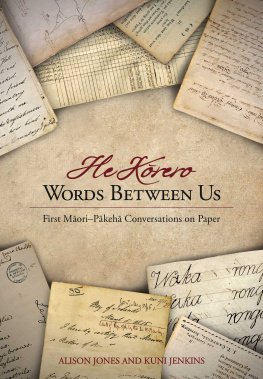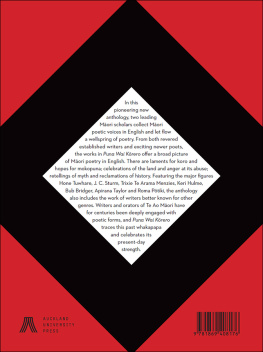For the last five years I have been Director of Te Matahauariki Institute, a research group based within the School of Law at the University of Waikato, with a programme title Laws and Institutions of Aotearoa/New Zealand.
Our programme seeks to contribute to an intellectual climate to realise a vision of socially inclusive laws and political and legal institutions in Aotearoa/New Zealand derived from two many-stranded traditions. Such laws and institutions must have sufficient flexibility and robustness to meet the future needs of the citizens of Aotearoa/New Zealand, as individuals and as members of collectivities.
As an integral part of the collaborative research process, we have regular meetings and informal contact with a group of distinguished New Zealanders who act as our Advisory Panel. This serves also to provide an auditing mechanism to maintain the programmes focus in such a broad field. The advisory group includes socio-legal scholars, academics, Maori scholars and key government officials.
In that regard, we are hugely privileged to have Dame Joan Metge as a revered member and advisor. With the wealth of her scholarship and experience, her profound knowledge of Te Ao Mori enhanced as it is by an enchanting deference and respect for Mori cultural traditions, Dame Joan is an exemplar for those whose vision it is to see Mori and Pkeh working together as equal partners for a common purpose: a noble cause for which she has devoted much of her life.
This beautiful and truly seminal book puts forward a practical mode of managing discussion with the utilisation of alternative procedures incorporating many insights derived from the tikanga Mori.
Perhaps just as importantly, it offers us all a way of doing partnership as well as talking about it.
Ko Dr. Dame Joan Metge
He whaea rangimarie, aroha, wairua pono.
Kia hora te marino
Kia papa pounamu te moana
Kia tere te krohirohi
May the calm be widespread
May the sea glisten like the greenstone
And may the shimmer of summer dance across thy pathway.
M.J.A.(Mick)BROWN
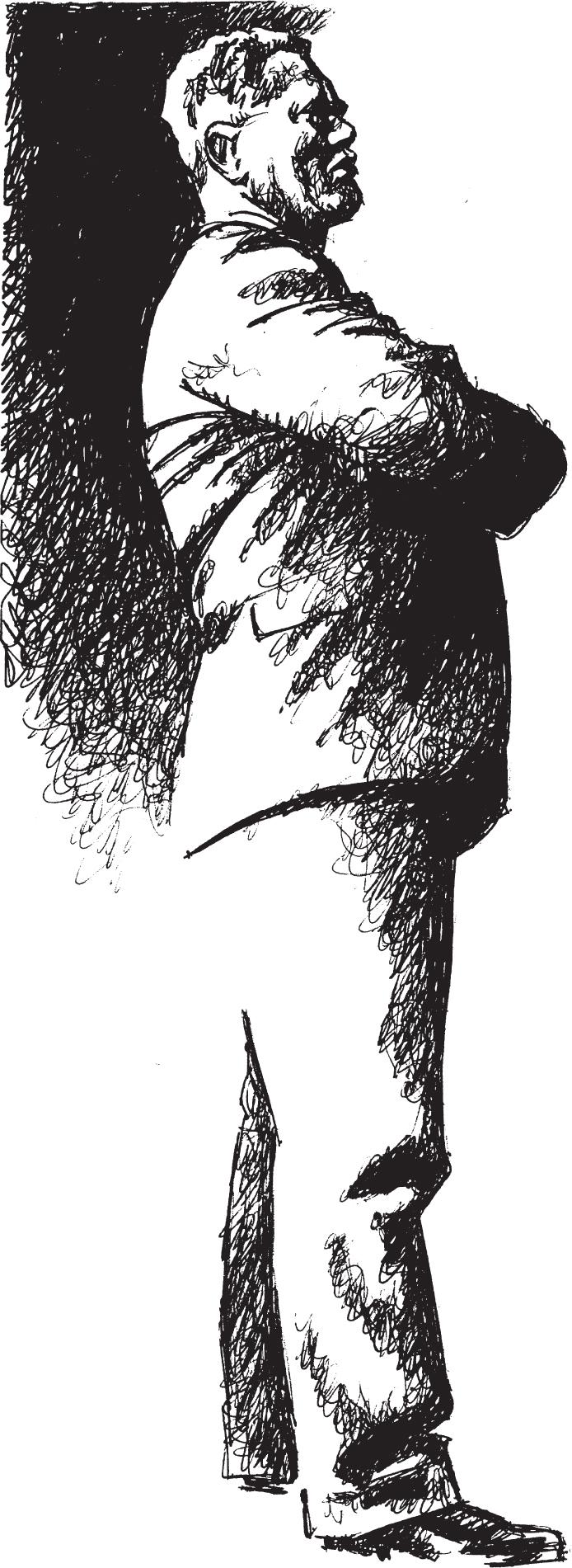
HOANI WAITITI
The seed is sown
One wintry night in 1961 I went with Hoani Waititi
At that first meeting, Hoani invited me to speak first. After I had read a carefully prepared paper full of facts, figures and reasoned argument, he stood up and, noteless, told the story of his life. At every turn his account gave personal meaning to the abstract points I had made, hammering them home. Working in tandem for the first time, I was exhilarated by the way we complemented and took fire from each other.
That night I learnt a lesson I have never forgotten. Hoani argued that as Mori and Pkeh we are bound together in one nation by the Treaty of Waitangi and by our shared history. He made that argument live for me by demonstrating how rewarding it was to work together for a common purpose. When Mori and Pkeh respect and trust each other, recognising our differences, we achieve our goals more effectively than we could alone, learn much that enriches us and have a great deal of fun in the process. Despite the seriousness of the subject, we laughed a lot that night in west Auckland.
Hoani Waititis vision of Mori and Pkeh working together as equal partners and his success in implementing it in the early days of the Mori Education Foundation were all the more remarkable because the official policy of assimilation was still largely in place, the Treaty of Waitangi was considered of marginal importance by the government and most Pkeh, and opportunities for Mori to manage their affairs and practise their cultural ways were confined to private space in homes and marae. Fortunately, Hoani was not alone in his vision. A similar spirit animated the Mori Leadership Conferences held mainly between 1959 and 1965, organised and sponsored jointly by Mori communities and the Departments of University Extension in Auckland and Wellington.
Gains and losses
In the 1970s and 1980s a new wave of articulate Mori leaders (including many graduates of the Mori Education Foundation and Mori Leadership Conferences) mounted a challenge to Pkeh domination which, with support from sympathetic Pkeh, effected major changes in MoriPkeh relations. The Treaty of Waitangi was brought to national consciousness as our nations founding document. The government recognised the validity of Mori grievances and embarked on the process of redress through the Waitangi Tribunal and direct negotiation. Pkeh generally became more aware and respectful of Mori culture and there was a significant increase in the number of Mori words used without translation as part of the general New Zealand vocabulary. Mori pioneered initiatives as self-managing service providers in education and health. Publication of the report Puao-Te-Ata-Tu
Yet, in spite of remarkable advances, Mori and Pkeh are still a long way from achieving Hoani Waititis vision of partnership on a national scale. Over the last ten years ground has actually been lost in some areas, and promising developments have been stalled or sidetracked. Relations between Mori and Pkeh are not improved by the news media, whose practitioners tend to highlight tensions and conflicts, at the expense of stories of cooperation and achievement.
In the late 1980s and 1990s technological change demanding ever more advanced skills, coupled with economic restructuring and globalisation of the market economy, disadvantaged Mori as a group compared with Pkeh, so that once again the government is developing strategies designed to close the gaps in education, employment and health. Although Pkeh generally use an increased range of Mori words, they do so with seriously restricted meanings, missing their full richness and contextual variation. Literary and artistic taonga (treasures) such as the haka and the koru are adopted as general icons with limited understanding of their significance and reapplied in ways that distort their original meaning and purpose.
Ironically, the increased national recognition and respect accorded Mori and Mori ways lead to misunderstanding and separation as often as they do to understanding and cooperation. Compensating for 150 years of domination, many articulate Mori insist on exclusive rights to practise and control the tikanga (right ways) inherited from their ancestors. Unwilling to educate Pkeh in Mori ways themselves, they are nevertheless quick to rebuke them for insensitivity or mistakes, making no allowance for ignorance, anxiety or learning difficulties. Pkeh with a good understanding of Mori language and culture often hold back from pursuing their interest out of respect and sympathy for what Mori have suffered, while many who would like to learn more are put off by fear of rebuff.
Although it is now common for Mori cultural practices such as karanga, pwhiri, karakia and the ritual lifting of tapu to be included in the planning of public occasions, they are typically additions rather than an integral part of the proceedings, clip-ons carried out by Mori according to tikanga and in the Mori language. Some Mori speakers, mindful of the traditional value of arohanui ki te tangata (consideration for others), provide translations and explanations, but the majority insist on Mori only. As a result most non-Mori sit through such rituals without understanding and fail to appreciate either their symbolism or their psychological insight. Lack of understanding breeds boredom, resentment and impatience with Mori aspirations.

